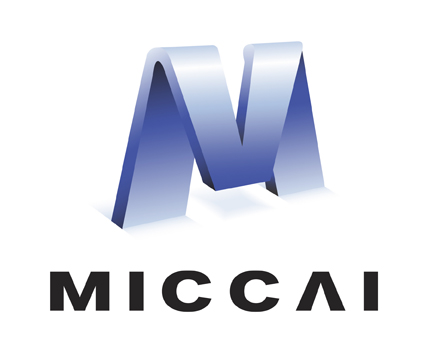Abstract
The connectivity structure of brain networks/graphs provides insights into the segregation and integration patterns among diverse brain regions. Numerous studies have demonstrated that specific brain disorders are associated with abnormal connectivity patterns within distinct regions. Consequently, several Graph Neural Network (GNN) models have been developed to automatically identify irregular integration patterns in brain graphs. However, the inputs for these GNN-based models, namely brain networks/graphs, are typically constructed using statistical-specific metrics and cannot be trained. This limitation might render them ineffective for downstream tasks, potentially leading to suboptimal outcomes. To address this issue, we propose a Customized Relationship Graph Neural Network (CRGNN) that can bridge the gap between the graph structure and the downstream task. The proposed method can dynamically learn the optimal brain networks/graphs for each task. Specifically, we design a block that contains multiple parameterized gates to preserve causal relationships among different brain regions. In addition, we devise a novel node aggregation rule and an appropriate constraint to improve the robustness of the model. The proposed method is evaluated on two publicly available datasets, demonstrating superior performance compared to existing methods. The implementation code is available at https://github.com/NJUSTxiazw/CRGNN.
Access this chapter
Tax calculation will be finalised at checkout
Purchases are for personal use only
Similar content being viewed by others
Notes
- 1.
- 2.
https://fcon_1000.projects.nitrc.org/indi/abide/.
References
Aggarwal, P., Gupta, A.: Multivariate graph learning for detecting aberrant connectivity of dynamic brain networks in autism. Medical image analysis 56, 11–25 (2019)
Bacciu, D., Di Sotto, L.: A non-negative factorization approach to node pooling in graph convolutional neural networks. In: AI* IA 2019–Advances in Artificial Intelligence: XVIIIth International Conference of the Italian Association for Artificial Intelligence, Rende, Italy, November 19–22, 2019, Proceedings 18. pp. 294–306. Springer (2019)
Chen, D., Liu, M., Shen, Z., Zhao, X., Wang, Q., Zhang, L.: Learnable subdivision graph neural network for functional brain network analysis and interpretable cognitive disorder diagnosis. In: International Conference on Medical Image Computing and Computer-Assisted Intervention. pp. 56–66. Springer (2023)
Chen, X., Zhang, H., Zhang, L., Shen, C., Lee, S.W., Shen, D.: Extraction of dynamic functional connectivity from brain grey matter and white matter for mci classification. Human brain mapping 38(10), 5019–5034 (2017)
Cui, H., Dai, W., Zhu, Y., Li, X., He, L., Yang, C.: Interpretable graph neural networks for connectome-based brain disorder analysis. In: International Conference on Medical Image Computing and Computer-Assisted Intervention. pp. 375–385. Springer (2022)
Deco, G., Tononi, G., Boly, M., Kringelbach, M.L.: Rethinking segregation and integration: contributions of whole-brain modelling. Nature Reviews Neuroscience 16(7), 430–439 (2015)
Jiang, H., Cao, P., Xu, M., Yang, J., Zaiane, O.: Hi-gcn: A hierarchical graph convolution network for graph embedding learning of brain network and brain disorders prediction. Computers in Biology and Medicine 127, 104096 (2020)
Kipf, T.N., Welling, M.: Semi-supervised classification with graph convolutional networks. In: International Conference on Learning Representations (2017)
Li, X., Zhou, Y., Dvornek, N., Zhang, M., Gao, S., Zhuang, J., Scheinost, D., Staib, L.H., Ventola, P., Duncan, J.S.: Braingnn: Interpretable brain graph neural network for fmri analysis. Medical Image Analysis 74, 102233 (2021)
Mclntosh, A., Gonzalez-Lima, F.: Structural equation modeling and its application to network analysis in functional brain imaging. Human brain mapping 2(1-2), 2–22 (1994)
Paszke, A., Gross, S., Massa, F., Lerer, A., Bradbury, J., Chanan, G., Killeen, T., Lin, Z., Gimelshein, N., Antiga, L., et al.: Pytorch: An imperative style, high-performance deep learning library. Advances in neural information processing systems 32 (2019)
Revell, A.Y., Silva, A.B., Arnold, T.C., Stein, J.M., Das, S.R., Shinohara, R.T., Bassett, D.S., Litt, B., Davis, K.A.: A framework for brain atlases: Lessons from seizure dynamics. Neuroimage 254, 118986 (2022)
Tian, Y., Sun, P.: Percolation may explain efficiency, robustness, and economy of the brain. Network Neuroscience 6(3), 765–790 (2022)
Tzourio-Mazoyer, N., Landeau, B., Papathanassiou, D., Crivello, F., Etard, O., Delcroix, N., Mazoyer, B., Joliot, M.: Automated anatomical labeling of activations in spm using a macroscopic anatomical parcellation of the mni mri single-subject brain. Neuroimage 15(1), 273–289 (2002)
Vértes, P.E., Bullmore, E.T.: Annual research review: growth connectomics–the organization and reorganization of brain networks during normal and abnormal development. Journal of Child Psychology and Psychiatry 56(3), 299–320 (2015)
Waikhom, L., Patgiri, R.: A survey of graph neural networks in various learning paradigms: methods, applications, and challenges. Artificial Intelligence Review 56(7), 6295–6364 (2023)
Xu, K., Hu, W., Leskovec, J., Jegelka, S.: How powerful are graph neural networks? In: International Conference on Learning Representations (2019)
Yang, C., Wang, P., Tan, J., Liu, Q., Li, X.: Autism spectrum disorder diagnosis using graph attention network based on spatial-constrained sparse functional brain networks. Computers in Biology and Medicine 139, 104963 (2021)
Zhou, T., Thung, K.H., Liu, M., Shi, F., Zhang, C., Shen, D.: Multi-modal latent space inducing ensemble svm classifier for early dementia diagnosis with neuroimaging data. Medical image analysis 60, 101630 (2020)
Acknowledgments
This work was supported in part by the Natural Science Foundation of Jiangsu Province (No. BK20221487), the National Natural Science Foundation of China (No. 62172228) and the Jiangsu Provincial Key Research and Development Program (BE2021636). This work was also sponsored by Qing Lan Project of Jiangsu Province.
Author information
Authors and Affiliations
Corresponding author
Editor information
Editors and Affiliations
Ethics declarations
Disclosure of Interests
The authors declare that they have no known financial interests that could potentially influence the findings reported in this paper.
1 Electronic supplementary material
Below is the link to the electronic supplementary material.
Rights and permissions
Copyright information
© 2024 The Author(s), under exclusive license to Springer Nature Switzerland AG
About this paper
Cite this paper
Xia, Z., Wang, H., Zhou, T., Jiao, Z., Lu, J. (2024). Customized Relationship Graph Neural Network for Brain Disorder Identification. In: Linguraru, M.G., et al. Medical Image Computing and Computer Assisted Intervention – MICCAI 2024. MICCAI 2024. Lecture Notes in Computer Science, vol 15002. Springer, Cham. https://doi.org/10.1007/978-3-031-72069-7_11
Download citation
DOI: https://doi.org/10.1007/978-3-031-72069-7_11
Published:
Publisher Name: Springer, Cham
Print ISBN: 978-3-031-72068-0
Online ISBN: 978-3-031-72069-7
eBook Packages: Computer ScienceComputer Science (R0)





